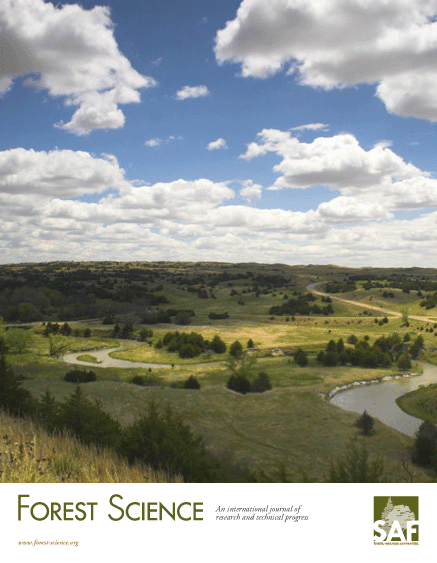-
PDF
- Split View
-
Views
-
Cite
Cite
Mahadev Sharma, John Parton, Modeling Stand Density Effects on Taper for Jack Pine and Black Spruce Plantations Using Dimensional Analysis, Forest Science, Volume 55, Issue 3, June 2009, Pages 268–282, https://doi.org/10.1093/forestscience/55.3.268
Close - Share Icon Share
Abstract
A taper equation was developed for jack pine and black spruce trees growing at varying density using a dimensional analysis approach. Data used in this study came from stem analysis on 1,135 jack pine (Pinus banksiana Lamb.) and 1,189 black spruce (Picea mariana [Mill.] B.S.P.) trees sampled from 25 even-aged monospecific plantations in the Canadian boreal forest region of Northern Ontario. About half of the trees were randomly selected for model development, with the remainder used for model evaluation. A nonlinear mixed-effects approach was applied in fitting the taper equation. The predictive accuracy of the model was improved by including random-effects parameters for a new tree based on upper stem diameter measurements. Three scenarios of using upper stem diameter measurements to predict random effects were examined for predictive accuracy: one diameter at any height along the bole; two diameters, one each from below and above breast height; and three diameters, one from below and the other two from above breast height. The upper height at which the diameter was measured was limited to 65% of total tree height for practical reasons. For the first scenario, the model calibrated using a diameter measurement from between 34 and 38% of total height provided the best predictions of inside-bark diameters. For the second scenario, the model calibrated using one diameter from near the stump and the other from close to 65% of total height produced the least bias in predicting inside-bark diameters. For the third scenario, the model calibrated using the diameters from near the stump and at approximately 35 and 65% of total height provided the highest prediction accuracy.



